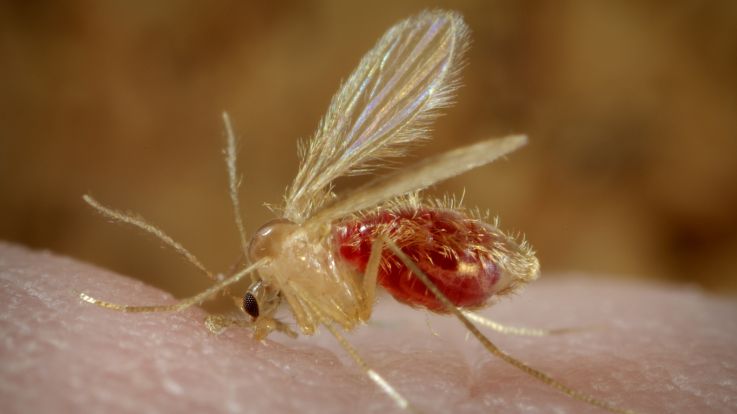Chandipura Virus: Symptoms, Causes And Treatment Explained

Only For Pro
Reviewed by expert panel
The Chandipura virus (CHPV) outbreak is no less than a nightmare for parents as nearly 15 children lost their lives in the past couple of days and this is not the first time. It is a growing health concern due to the potentially life-threatening risks and the fact that it primarily affects kids. This blog is a must-read as it will help you get a better picture of what Chandipura virus is and how you can protect your little ones.
What Is Chandipura Virus?
Chandipura Virus (CHPV) or Chandipura vesiculovirus, comes from the Vesiculovirus genus of the family Rhabdoviridae, the same family to which the rabies virus belongs. It is a rare but potentially life-threatening virus that is more likely to affect children below 14 years of age. The manifestations are typically similar to those of flu and severe encephalitis may be seen in acute cases. Chandipura Virus is progressive in nature and the symptoms aggravate quite aggressively, leading to coma and even death.

Chandipura Virus Origin
Chandipura virus derives its name from Chandipura District in Nagpur, Maharashtra, where the virus was 1st identified. This happened during an encephalitis outbreak, back in 1965. The virus was again isolated in 1980, with one case emerging from Madhya Pradesh. Some experts even blame the Chandipura Virus for the encephalitis outbreak in Andhra Pradesh, Maharashtra, and Gujarat, which claimed 329 lives in 2003.
Chandipura Virus Outbreak 2024
The virus has again emerged in Gujarat, Rajasthan, and Madhya Pradesh with the first case reported from a hospital in Sabarkantha district. On 17th June 2024, the National Institute of Virology (NIV) in Pune, confirmed that Chandipura Virus was the reason behind the death of a 4-year-old girl child in Gujarat. As per the Gujarat Health Department, 29 cases have been diagnosed so far from 12 districts including Sbarkantha, Aravalli, Mahisagar, Kheda, Mehsana, and Rajkot.
Symptoms of Chandipura Virus
A person infected with the Chandipura Virus is likely to present with the same symptoms as someone with the flu. It is advisable to go for proper evaluation if someone is experiencing any of the following:

In extreme cases, it can even result in coma or even death.
How Does The Chandipura Virus Spread?
Chandipura Virus is vector-borne, just like malaria. These refer to viruses that are transmitted by blood-feeding insects like mosquitoes, ticks, and sandflies. The virus is believed to be carried by female sandflies, especially the Phlebotomine sandfly, which is commonly seen during monsoons. When these sandflies sting someone, they easily transmit the virus via their saliva. The disease is not contagious and does not spread by coming in contact with an infected person.
Why Is The Chandipura Virus More Common In Children?
Children in the age group of 9 months to 15 years have been found to be in the higher risk group and all of the suspected casualties belong to this age group. The question is, “why children?’
-
Underdeveloped immune system: One of the possible factors is that small children do not have fully developed immunity and as such their body is not able to fight viruses like CHPV efficiently. This not only makes them more vulnerable to viruses but also to the complications associated with them.
-
Playing outdoors: When children play outdoors, their chances of being exposed to sandflies are comparatively higher, and especially if they spend time in areas with dense vegetation or near still water.
-
Lack of awareness among parents: There is a general lack of awareness about the Chandipura Virus as it is quite rare. As such, it is possible for people to mistake the symptoms for flu or some other infection. This results in delayed diagnosis and treatment.
Can We Prevent Chandipura Virus
Chandipura Virus can be prevented by taking necessary preventive measures. First of all it is important to control the vector. Effective control measures are to be taken to curb the population of sandflies which are known to transmit the Chandipura Virus. Apart from these, people need to take small steps to help alleviate the chances of being bitten by the vector.
-
Make your little ones wear full-sleeved clothes, especially when they are going out.
-
Use bed nets and avoid keeping the windows open.
-
Use insect repellents
-
Keep your surroundings clean and dispose of wastes properly
-
Educate your kids about the potential risks.
-
Seek immediate medical intervention if a child presents with the symptoms.
How is Chandipura Virus Treated?
Currently, there is no known cure for the Chandipura Virus and doctors generally focus on alleviating the symptoms through proper care and medication. Early detection and treatment are crucial to ensure minimal complications and hospitalisation is important in case of any symptoms.
-
The child should be kept properly hydrated as there are risks of dehydration due to persistent vomiting and diarrhoea
-
The neurological and respiratory symptoms require a specialised approach and intensive care.
-
The fever is generally managed with the help of antipyretic medication.
-
If the patient is experiencing seizures, anticonvulsants may be prescribed.
The Chandipura Virus can be curbed by raising awareness. Share this blog with your loved ones and feel free to reach out if you have any queries.
FAQs
Q1 - Is Chandipura Virus contagious?
A - No, Chandipura virus is not contagious.
Q2 - Why is Chandipura Virus more common in children?
A - Chandipura Virus is more common in children as they tend to have an underdeveloped immune system.
Q3 - How to prevent Chandipura Virus?
A - Chandipura Virus can be prevented by taking precautionary measures like wearing full-sleeved clothes, using insect repellents and nets, and keeping your surroundings clean.
Q4 - Can Chandipura Virus be cured?
A - There is no known cure for Chandipura virus as of now, and doctors primarily focus on managing the symptoms & complications.
Sources
Be the first to support
Be the first to share
Comment (0)
Related Blogs & Vlogs
No related events found.
Loading more...